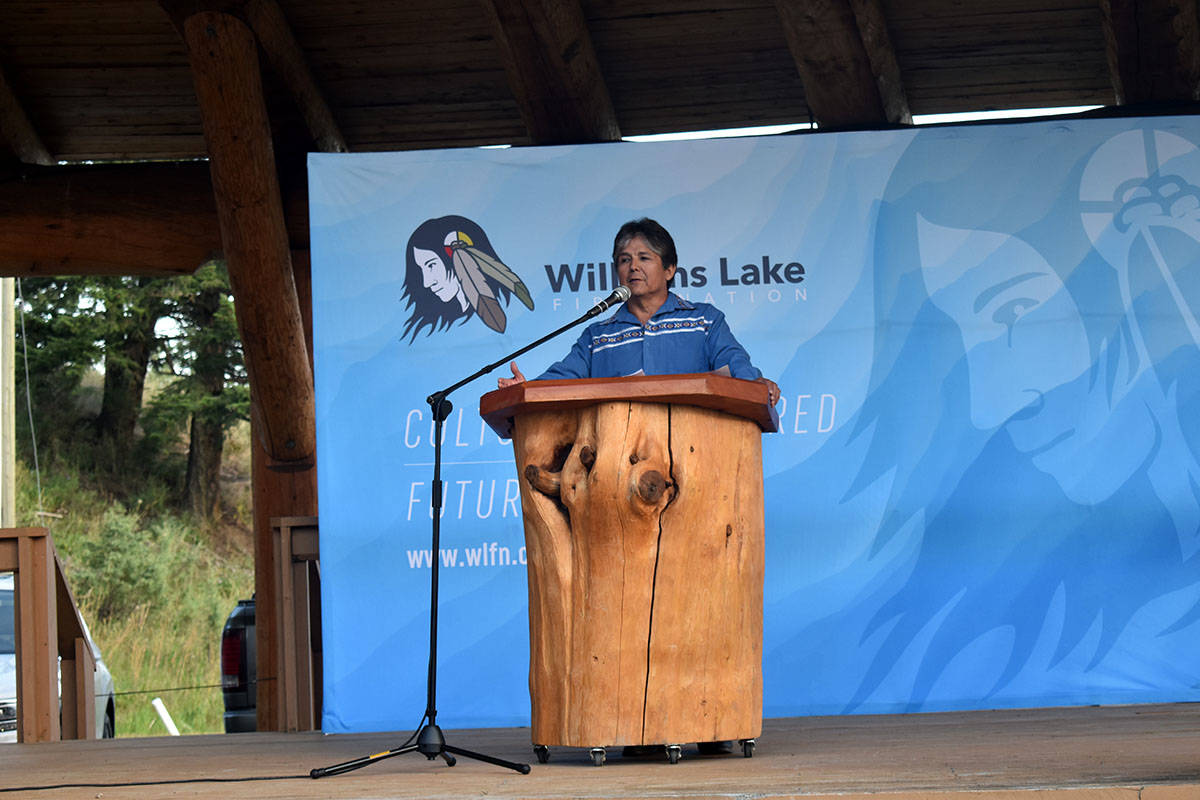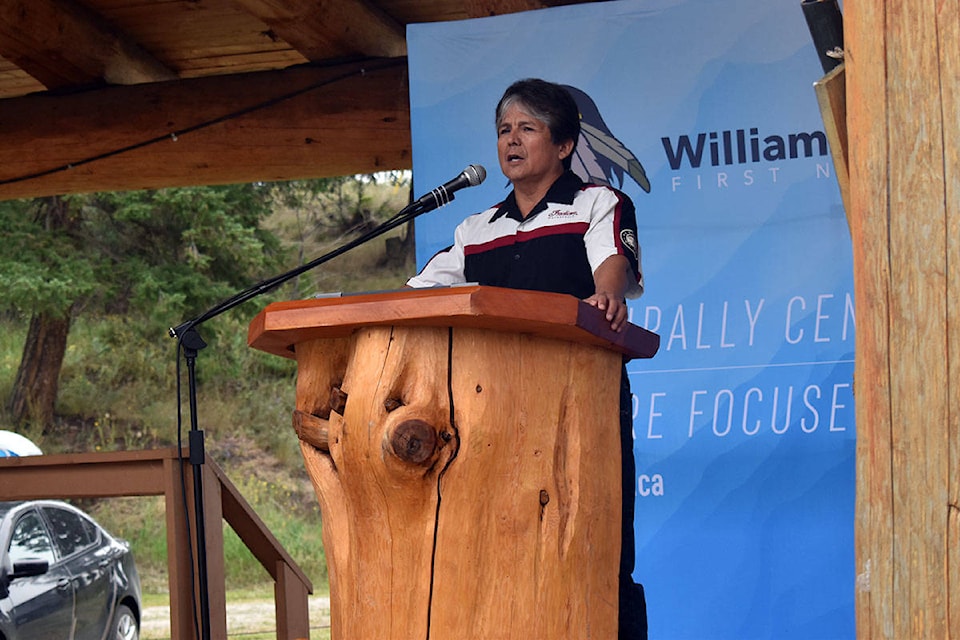The Chief of Osoyoos Indian Band (OIB) can now add Williams Lake First Nation (WLFN) to his list of more than 300 reserves he has visited throughout North America.
“I’ve been on the poorest of the poor, also I’ve been on the wealthiest of the wealthiest and I’m not saying that money is everything but what I’ve learned is everything costs money,” Clarence Louie told WLFN members Thursday (Aug. 13) evening at the arbor located at Chief Will-Yum campsite.
Louie has been chief of the OIB for more than three decades and said his election platform has always been on economic development.
“The dollar sign equals opportunity — that’s what money is to me — it’s opportunity for our people,” he said.
“I don’t have a love of money. I have a love of opportunity.”
Read More: New name for First Nations community near Williams Lake
Louie was invited to speak to the community by WLFN chief and council, and chief administrative officer Aaron Mannella who first met Louie at the Edmonton airport where both of them had flown to watch the Edmonton Oilers play against the Montreal Canadiens.
Having grown up in the 70s, Louie recalled how he never heard of his people being able to afford taking an overseas vacation from the poverty-stricken OIB which, at the time, only had a vineyard and band office.
He said part of the reason he likes making money is so they don’t have to depend on grants which any successful First Nation does not solely rely on.
“And the dumbest thing you can do in Indian country is depend on the Department of Indian Affairs,” Louie said. “The government has never and will never give us enough money to run one thing on our reserves.”
Noting business is not without risk and unanimous support, Louie said the OIB spent millions of dollars to purchase an off-reserve cement company despite knowing little of the business. Today, he said it is managed by an OIB member with other members having completed the necessary training to work in the gravel pit.
Read More: Williams Lake First Nation signs partnership agreement with DWB Consulting Services Ltd
“In our system you have to earn your way up the ladder,” Louie said, noting many have left to go to school in the U.S. and that the OIB would not be able to support them had they not had money.
“The grant monies could dry up tomorrow at Osoyoos and we wouldn’t miss a heartbeat — nobody would get laid-off, no student would lose their funding.”
As the OIB invests the revenue from their economic development into education and health, and building of homes, they are also keen on expanding their hunting grounds. Louie said although some OIB councillors have argued they shouldn’t have to buy back stolen lands, not once in his 34 years as chief has he ever seen a land title owner offer to give their lands back.
“Again that’s why I love making money, so we can go back and buy some of our land back,” he said, noting the OIB is over 4,000 acres short of traditional reserve lands that once belonged to them.
Read More: Province purchases ranch for Interior First Nation as part of ongoing treaty negotiations
No longer working to please everyone, Louie said that was the opposite case when the OIB missed the opportunity to purchase 5,000 acres of land that is now lined with residential properties.
The OIB’s largest source of revenue is through reserve land leases — their most profitable and successful of which is the Okanagan Correctional Centre, Louie said.
“A leader will say things people don’t like, a leader will stand alone if they have to on principle, a leader will do things when others fight them,” Louie said, adding he is not a politician that leans which way the wind blows, watch what they say depending on who is in the room and make promises and not keep them.
Read More: B.C. Interior First Nation breaks ground on farm-to-gate cannabis cultivation facility
WLFN Chief Willie Sellars called Louie an inspiration, and said he learns something new each time from him.
Louie, who participated in an WLFN staff appreciation event the following morning, left to return home on his motorcycle with his wife Brenda on Friday, Aug. 14.
“What I’ve noticed is once a First Nation has economic power, political power automatically follows —you have more of a say in your region, in your territory,” he said.
Do you have a comment about this story? email:
rebecca.dyok@wltribune.com
Like us on Facebook and follow us on Twitter.

